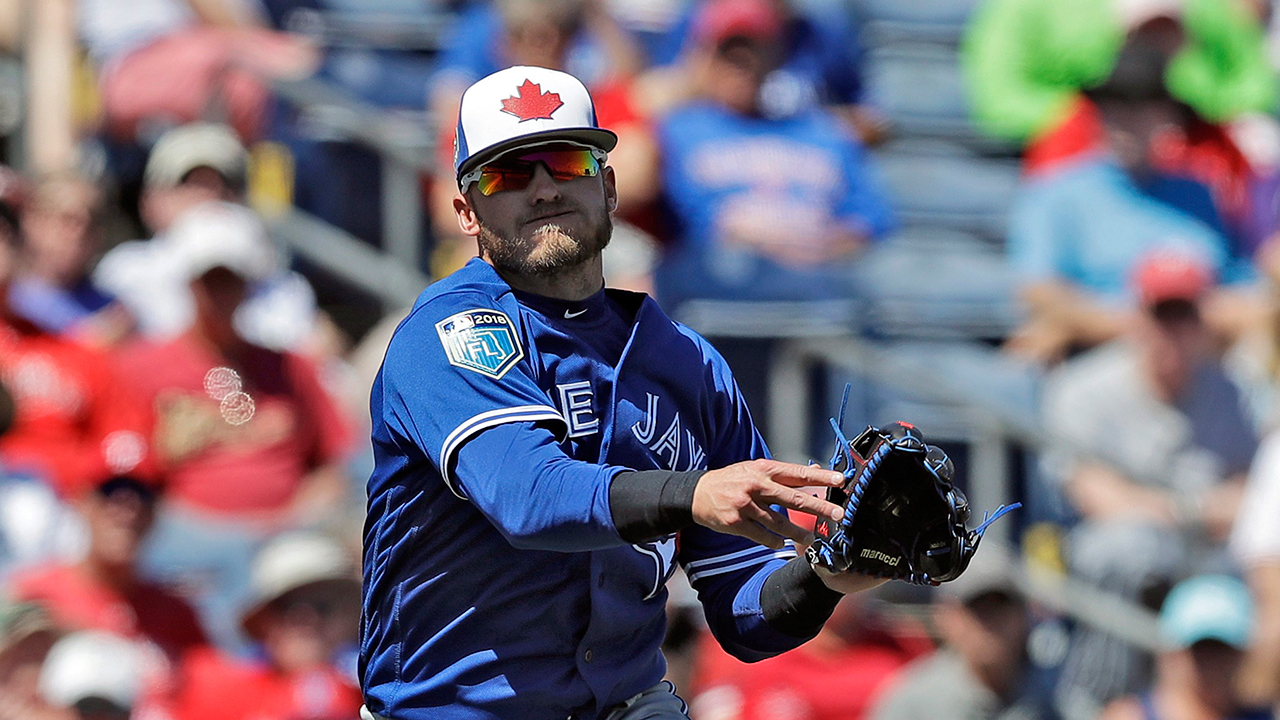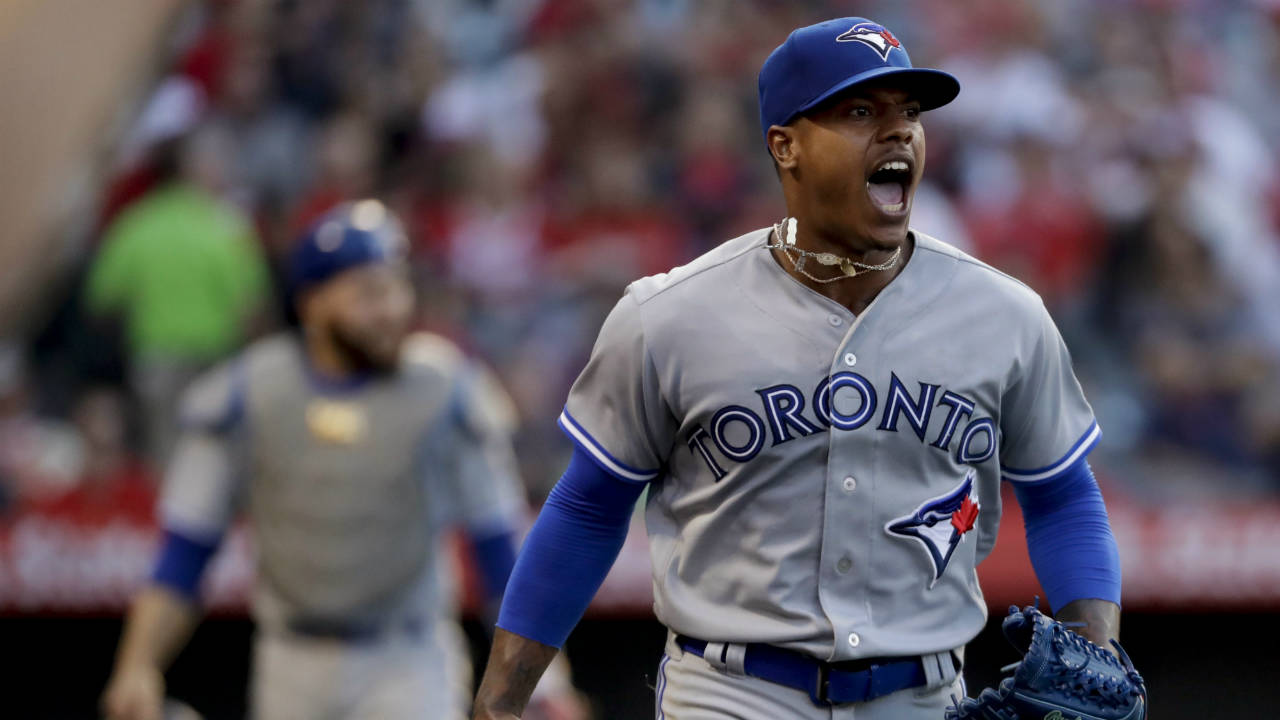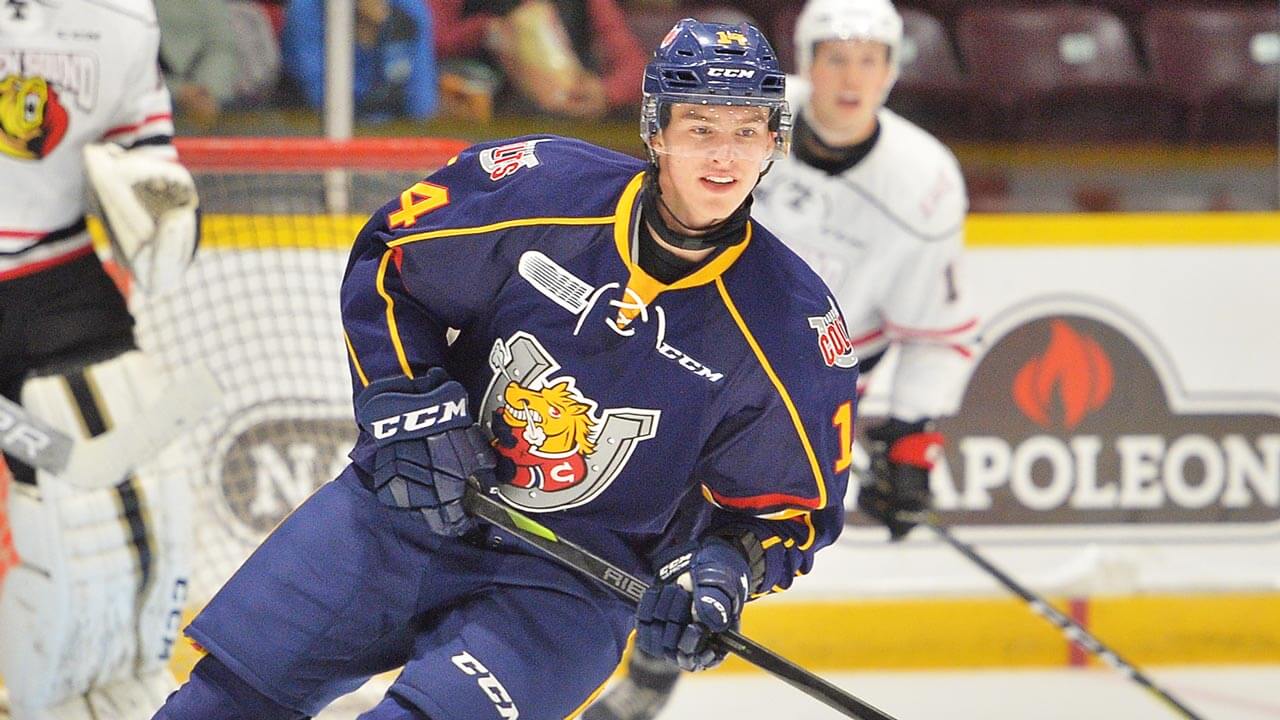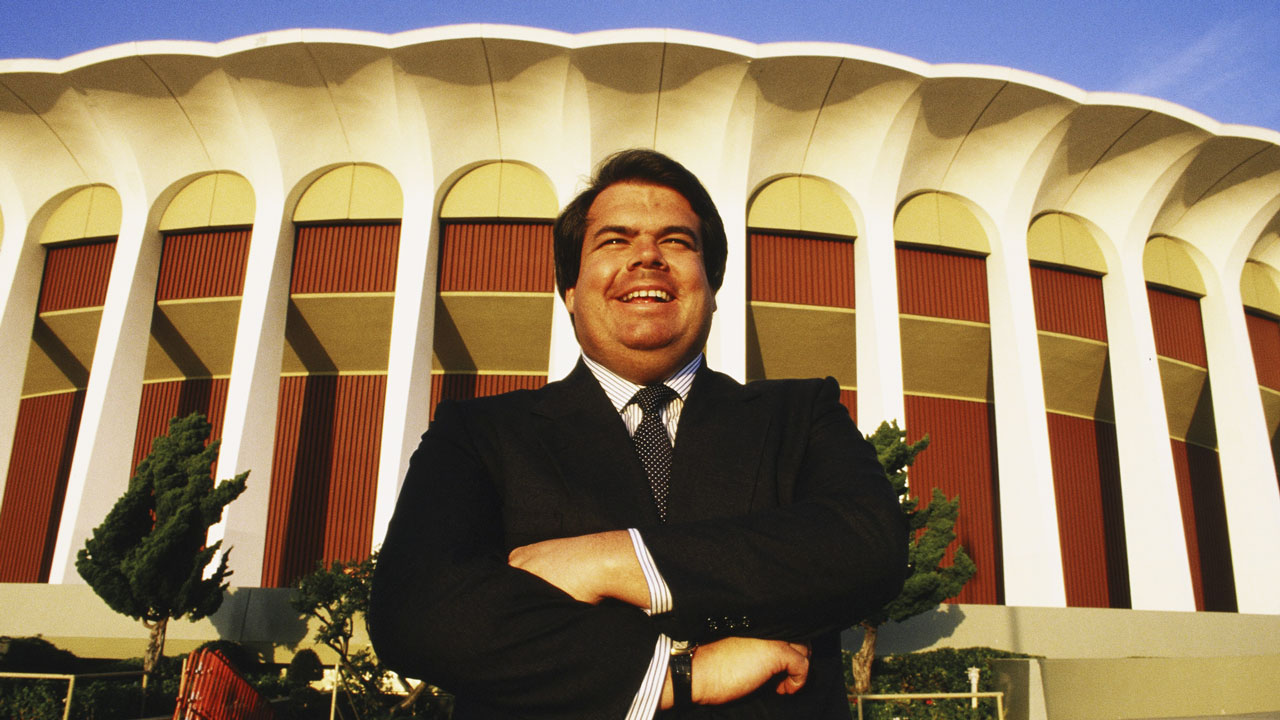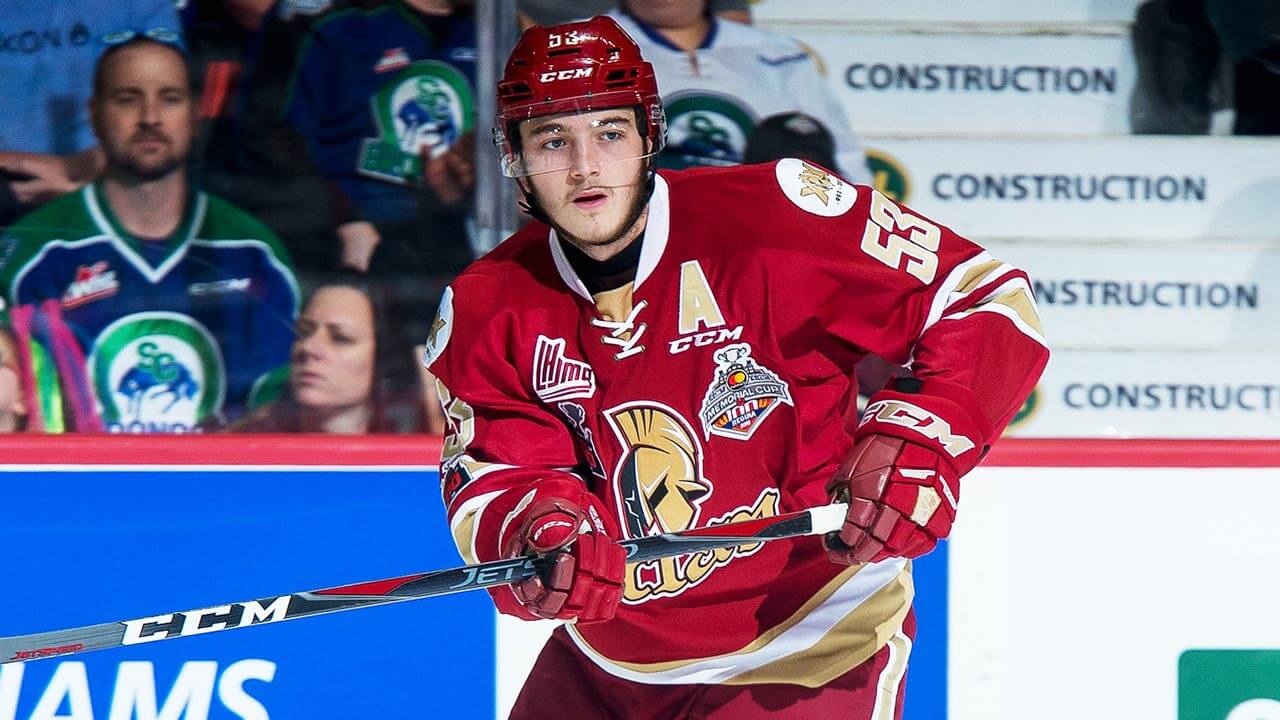In the sixth inning of a triple-A game this May, Buffalo Bisons right-hander Conor Fisk gave up a screaming liner right back up the middle. He reacted quickly, stretching his left arm over his head to try to snare it, but the ball was hit too hard. By the time Fisk got his glove up it was past him, a base knock headed for the outfield grass. Buffalo centre fielder Roemon Fields charged in to collect it.
Lourdes Gurriel Jr. had another idea. Sprinting from the first-base side of second, the 24-year-old Cuban didn’t so much get to the ball as get near it. But being six-foot-three and absurdly athletic has its advantages. As the ball entered the very limit of his range, Gurriel bent at the waist, reached his left arm out as far as he could, and picked the ball off the grass, nearly falling into a full somersault as his long legs churned beneath him. Good stuff — he’d stopped the ball from getting to the outfield, and ensured no worse than an infield single.
Again, another idea. Gurriel kept himself upright just long enough to pivot off his right foot, transfer the ball to his free hand, and throw across his body. As he crash landed on the shortstop side of second, the ball short-hopped in the dirt and dropped perfectly into first baseman Rowdy Tellez’s glove a split-second before the runner hit the bag. Buffalo’s dugout erupted. Gurriel got up, slapped his glove, and flashed a grin towards a flabbergasted Fields in centre.
Once it was uploaded to YouTube, the play began making the rounds in group chats and email chains between Toronto Blue Jays coaches and coordinators. Did you see this? Look what Gurriel just did. John Schneider, the double-A New Hampshire Fisher Cats manager who’s worked closely with Gurriel at various levels over the last 16 months, was in his office when he first saw it. His eyes went wide and he said a word he’d rather not repeat on record. “I was like, ‘Holy…’” Schneider says the next morning. “That play was ridiculous. He’s behind second base, throwing across his body to get the runner. There’s nothing routine about that. But that’s the kind of stuff he can do.”
That kind of stuff is why the Blue Jays signed Gurriel to a $22-million, seven-year commitment shortly after he defected from Cuba two years ago. And it’s why they’ve poured a great deal of time and resources into his development ever since. The idea was to mould Gurriel into Toronto’s version of Houston’s Marwin Gonzalez or Chicago’s Ben Zobrist — capable hitters who can play all over the diamond. And it was understood that this would be a bit of a project. Blessed with a tantalizing array of tools on both sides of the ball, Gurriel arrived a raw, incomplete player; he didn’t even have a position. His innate talent was undeniable, as was his love of the sport and desire to get better, but he had holes in his game, flaws that needed smoothing out. He lacked professional experience; he’d never played a full season; and yet, everyone who saw him recognized he contained something special. The task ever since has been bringing it out.
“Some nights, man — I’ve seen him hit balls to right-centre that looked like a lefty pulled it,” Schneider says. “He’s got some serious juice in his bat, some serious bat speed. And he’s such a smart player. He’s one of the really bright ones. He always wants more. He’s always asking questions. I think it’s just a matter of time before it all comes together for him. And when it does, it could be pretty exciting.”
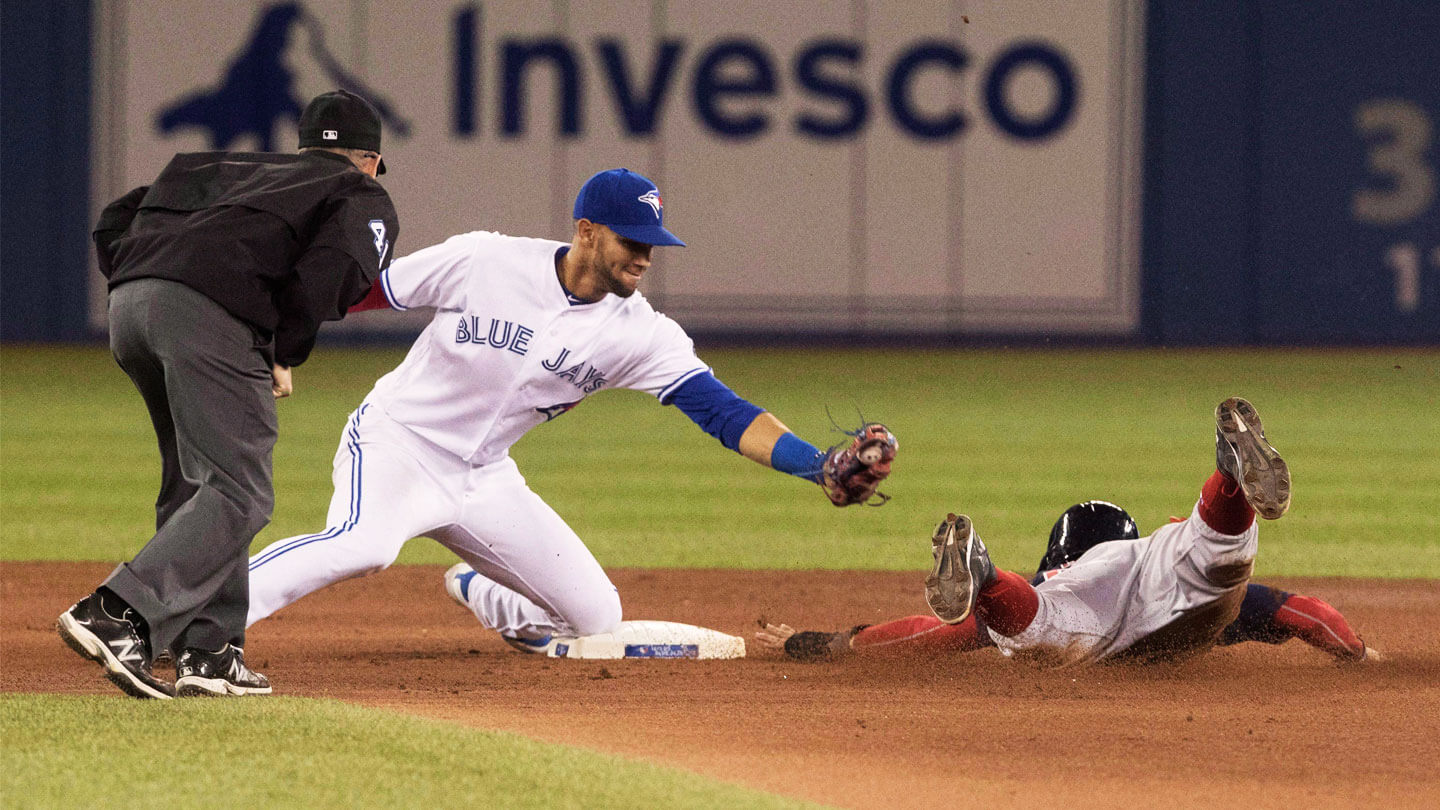
Being a Gurriel means being a part of Cuban baseball’s first family. The patriarch, Lourdes Sr., hit .323 over more than 1,700 games in the Cuban National Series, and led his country to Olympic gold at the 1992 Games in Barcelona. Lourdes Sr.’s brother, Luis, played 21 CNS seasons. Their uncle, Jose R. Delgado, played two decades himself and was part of the gold medal-winning team in Barcelona. Jose’s son, Yoani, caught for 10 CNS seasons. When his playing days were over, Lourdes Sr. became a manager. He led the national team at the 2005 Baseball World Cup and 2009 World Baseball Classic. “For a lot of people in Cuba,” says Blue Jays designated hitter Kendrys Morales, a Cuban native, “that man is a hero.”
So, it’s not like any of Lourdes Sr.’s children were going to pursue soccer careers. Gurriel has two older brothers — Yulieski, who plays for the Astros, is 34; Yunieski, a veteran of 16 CNS seasons, is 36 — and as each boy grew up, Lourdes Sr. enforced one rule on a daily basis: before they could go out and play with their friends, they had to sit down and watch five innings of baseball. And not just watch them as a fan, but study them as students of the game, noting the pitches thrown, how hitters approached their plate appearances, and the decisions being made defensively.
Lourdes Sr. was constantly coaching. Gurriel remembers being 12 and struggling with his swing, which was too long through the zone. He wasn’t bringing his hands in to attack pitches on the inner half. Lourdes Sr. had his son take endless cuts, harping on him to focus on his hands, but the adjustment wouldn’t take. So, Sr. devised a simple if unconventional solution. He took a big mirror off a wall in their home and held it in front of his son, just out of the range his bat path should follow. If Gurriel’s swing was long, he’d hit the mirror; if it was compact and direct, he wouldn’t. “I was like, ‘But what if I break it?’” Gurriel remembers, speaking through Blue Jays interpreter Josue Peley. “He goes, ‘Well, if you break it, you’re going to have trouble with your mom. She’s going to be pissed. So, it’s up to you. Either you make the adjustment or you break the mirror.’”
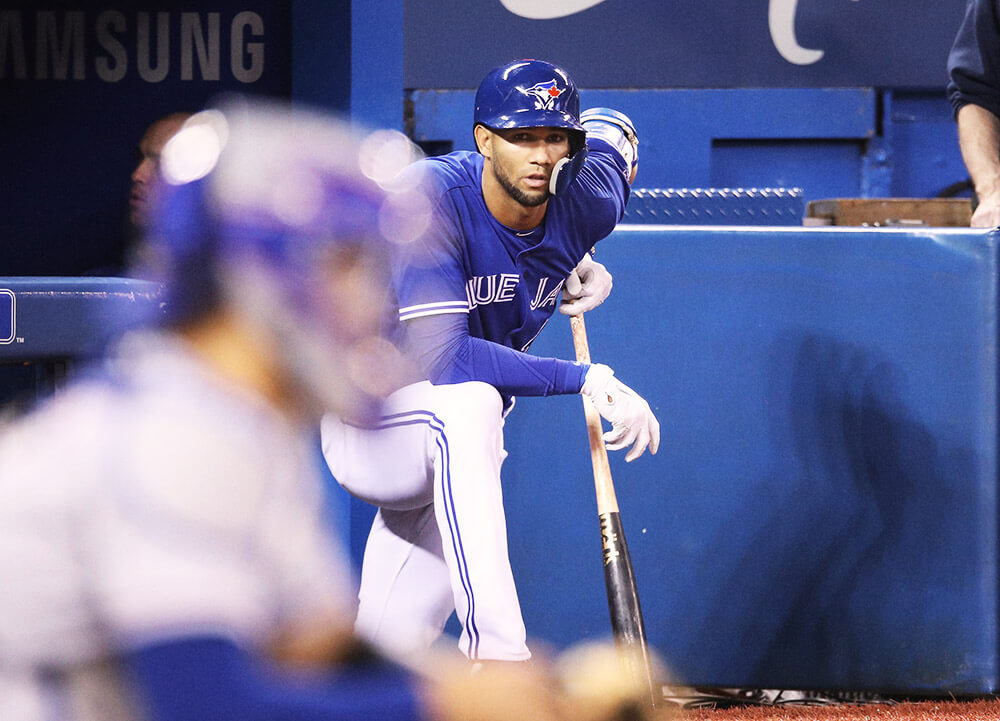
Gurriel has a million stories like that. When he was trying to improve his throwing accuracy, Lourdes Sr. set his son up outside the family home with a pile of baseballs before drawing a circle between two of the home’s windows. Just throw accurately and you won’t have to explain any broken glass. Unusual, sure. But effective. Gurriel developed into an athletic, dynamic ballplayer. He made his Cuban National Series debut at 16, making 16 pinch-hit appearances at a level where the average player was nearly a decade older. He earned a starting role at 17 and played five more seasons, manning positions all over the diamond. In the winter of 2015-16, he put up a .967 OPS with 10 home runs in 59 games as a 21-year-old. They were the last true home games he’ll ever play.
In February 2016, while representing their country at the Caribbean Series in the Dominican Republic, Lourdes Jr. and Yulieski defected, agreeing to pay smugglers to transport them to Haiti, where they would await residency in order to be eligible to sign with an MLB club. After residency was obtained, the Gurriel brothers reunited with their parents in Miami. News quickly spread through MLB that the two Cuban stars were officially on the market. Yulieski signed a five-year, $47.5-million contract with Houston that July, and made his MLB debut a month later. But Lourdes Jr., who was 22 at the time, had to wait until his 23rd birthday that October in order to be free of MLB limitations on international signings.
In Toronto, Blue Jays assistant general manager Andrew Tinnish began condensing the years of information he’d gathered on Gurriel since he was teenager. He hadn’t known when Gurriel would defect, only that he wanted to be prepared. Now, it was time for all that work to pay off. That September, Gurriel staged a workout at Rod Carew Stadium in Panama, which Tinnish attended along with special assistant Dana Brown, international scouting manager Harry Einbinder, and more than 100 scouts from across MLB. Gurriel ran the 60-yard dash in 6.6 seconds, a well-above-average time. He took a half-dozen rounds of batting practice, showing off his middle-of-the-field, line-drive approach, and then turning it loose and hitting balls out of the park to all fields. He took groundballs at shortstop and second base, fly balls in centre field.
While Gurriel’s skills were raw, his physical tools were undeniable. So, too, was his innate knowledge of the game. But Tinnish remembers being most impressed by something else. “There were a few other players, younger players, there that were taking groundballs, taking BP with him, there for double-play feeds — that sort of thing,” Tinnish remembers. “And I really liked how he interacted with those players. [The day] clearly wasn’t about them, but he kind of made them a part of it and treated them like teammates. That showed me something from a character perspective.”
Tinnish would learn more about that a month later when he was part of a Blue Jays contingent that travelled to Miami for a private meeting with Gurriel and his father. Lourdes Jr. recounted detailed stories of how he was raised in the game, and how much that upbringing had taught him. Lourdes Sr. spoke at length about how important baseball is to the family, how it’s in their blood.
“Honestly, that was probably the most impressive part of the whole pursuit of him,” Tinnish says. “Just the way Lourdes talks about baseball and the way he talks about his brothers and how his father raised him. He clearly took something from those experiences as a child in Cuba. His father is the kind of guy who you could sit with, keep your mouth shut for four hours, and just listen to him talk about baseball. You’d learn a lot. You’d learn things about the game that you haven’t thought about before. You hear the term, ‘He’s a good baseball man.’ Well, this is a legit good baseball man right here.”
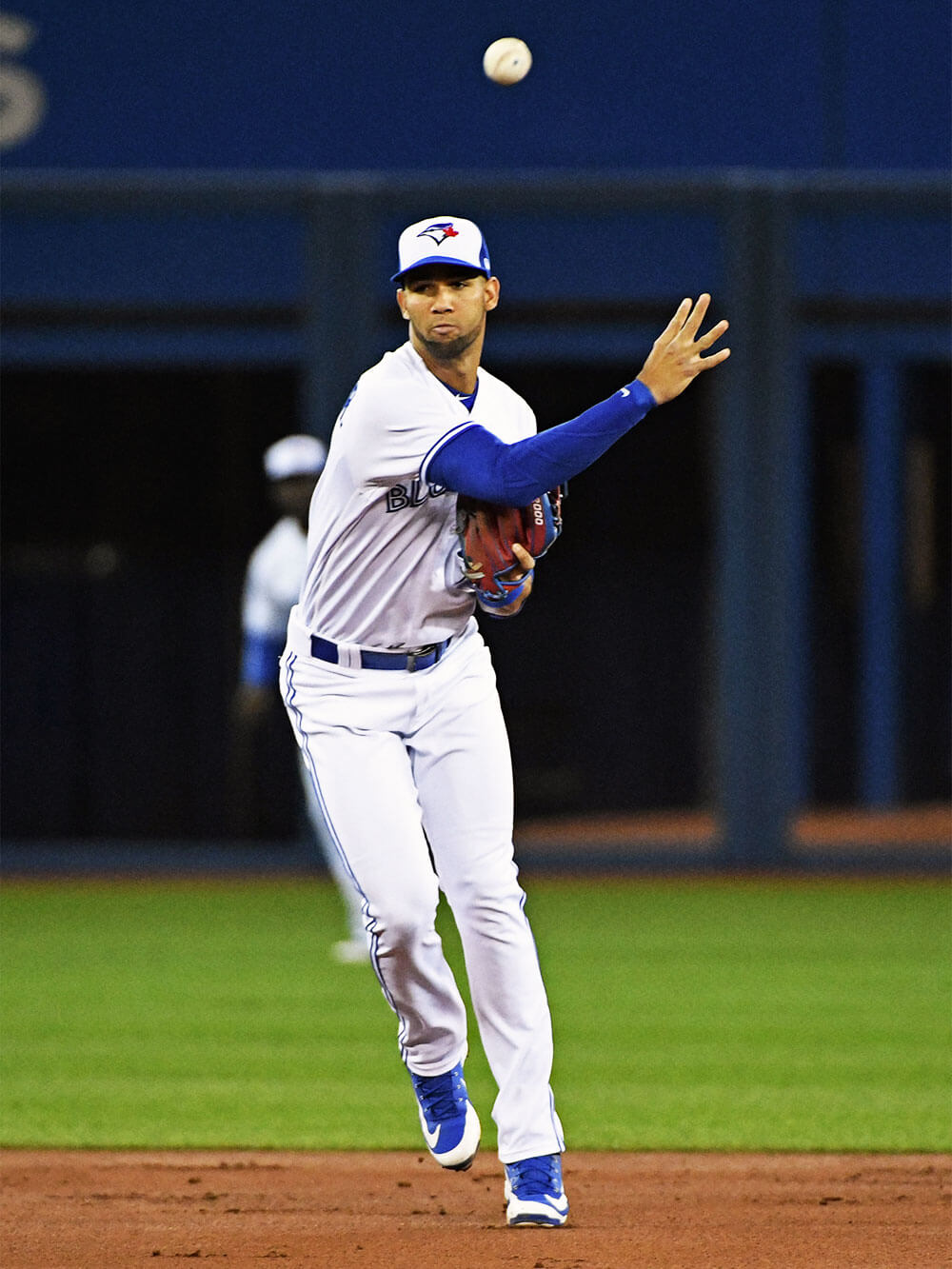
After a demanding first spring training with Toronto, and after not playing organized baseball for more than a year during his defection, Gurriel made his minor-league debut in April 2017 with the Dunedin Blue Jays. It lasted all of two plate appearances. He reaggravated a hamstring injury he’d picked up during spring training and missed the next two months. He returned to Dunedin’s lineup in June and hit .188 over his next 17 games. It was a frustrating time. But Schneider, Gurriel’s manager in Dunedin, told his young middle infielder to stay focused and push through. “It was a big adjustment period for him. He’s getting used to life in the States, he’s learning the language, he’s getting his feet underneath him both on the field and off,” Schneider says. “I think he was learning a lot about himself and what it takes to play every day and the demands of baseball at this level. It was an adjustment, no doubt. But we saw the talent, the potential, the athleticism — that stuff was obvious.”
The work ethic, too. Schneider remembers one night when Dunedin was playing the New York Yankees’ affiliate in Tampa. Gurriel made three errors at shortstop, all of them on throws to first. The next morning, when Schneider arrived at the park ahead of his team’s bus ride to Bradenton for a game that evening, he found Gurriel on the field with a bucket of balls, sending throw after throw into a screen at first base. He pulled out his phone and started taking video so he could send it to other members of Toronto’s development staff. “No one asked him to do that. Apparently, after the game, he told a member of our grounds crew, ‘Hey, I’m going to be here at 11. I’ll bring the balls, you bring the screens,’” Schneider says. “So, I get to the field, and there’s your big prospect out there by himself trying to get better. It’s pretty cool. That shows you a little bit about how great he wants to be, how motivated he is.”
[snippet id=3305549]
After finishing the season at double-A, Gurriel really began turning heads in the Arizona Fall League. In 21 games with Peoria he put up an .802 OPS; 10 of his 23 hits went for extra bases. Meanwhile, work continued at shortstop and second base,. While Gurriel has a flair for extraordinary plays, routine ones sometimes give him trouble. When he’s just running and reacting, he’s money. When he has too much time to think, things go wrong. Plus, the Blue Jays have essentially asked him to develop at two demanding positions simultaneously — far from an easy task. There have been many trying nights in the field, like that one in Tampa. But sometimes, his athleticism takes over, and he makes a play few ballplayers can make. Like the one in Buffalo in May; the one that made Schneider’s eyes go wide.
Beginning his second North American season, Toronto’s focus with Gurriel shifted from acclimatization to development. The Blue Jays asked him to adjust his arm slot, lowering it with the intention of improving his throwing accuracy. They also tweaked his set-up in the batter’s box, ingraining a more upright posture to allow his long levers to cover more of the plate. “He had a very busy and productive spring training,” says Blue Jays director of development Gil Kim. “Working on fine tuning his defensive game, improving as a hitter, continuing to improve his plate discipline. And, man, I can’t say enough about the commitment Lourdes makes to improving and getting better.”
Gurriel’s defence remains Toronto’s primary concern. If he’s going to be an everyday utility player someday, he has to be comfortable in a variety of positions. Gurriel says his natural spot is shortstop. But he got time at first and third base, and in left field, when he was playing pro ball in Cuba. And although he hasn’t played those positions since arriving in North America, he’s confident he could still do it. The Blue Jays will keep him up the middle for now, alternating between short and second base, but third and the outfield corners could still be possibilities down the road, especially considering his size.
Gurriel isn’t too concerned with the particulars. “To be honest, my goal has always been to be on the field,” he says. “I’ve learned to play everywhere and I feel comfortable wherever they put me. I just want to be out there.”
The other half of the development journey Gurriel is currently on comes at the plate. There’s no denying what he can do when he swings at good pitches to hit, but his discipline is an issue. Through his first 102 minor-league games, a span of 415 plate appearances, Gurriel struck out 70 times and drew only 17 walks. He’s shown a troubling tendency to chase pitches outside the zone and make outs in early counts. “He’s a swinger,” says Blue Jays manager John Gibbons. “But you don’t want to be getting yourself out.”
Asked if he considers himself an aggressive hitter, Gurriel doesn’t hesitate to embrace the label. “Si, si,” he says with a smile. He’s always been that way, since he was little, and it’s gotten him this far. (His brother, it’s worth noting, is seeing the sixth-fewest pitches per plate appearance — 3.33 — in MLB this season.) Gurriel’s six seasons in the CNS — regarded as a much more aggressive offensive environment than MLB — only encouraged that swing-happiness. And, while they’d love for him to be a tad more selective, the Blue Jays aren’t trying to drive that aggressiveness completely out of his approach. They just want him using it appropriately. “For the most part, hitters are developed to be ready to hit the fastball and to be aggressive on the fastball. That’s a good thing. We want all of our hitters to hammer the fastball,” Kim says. “It’s about maintaining his aggressiveness that makes him so good, but at the same time selecting the proper pitches to attack. That’s an area that could really take him to another level.”
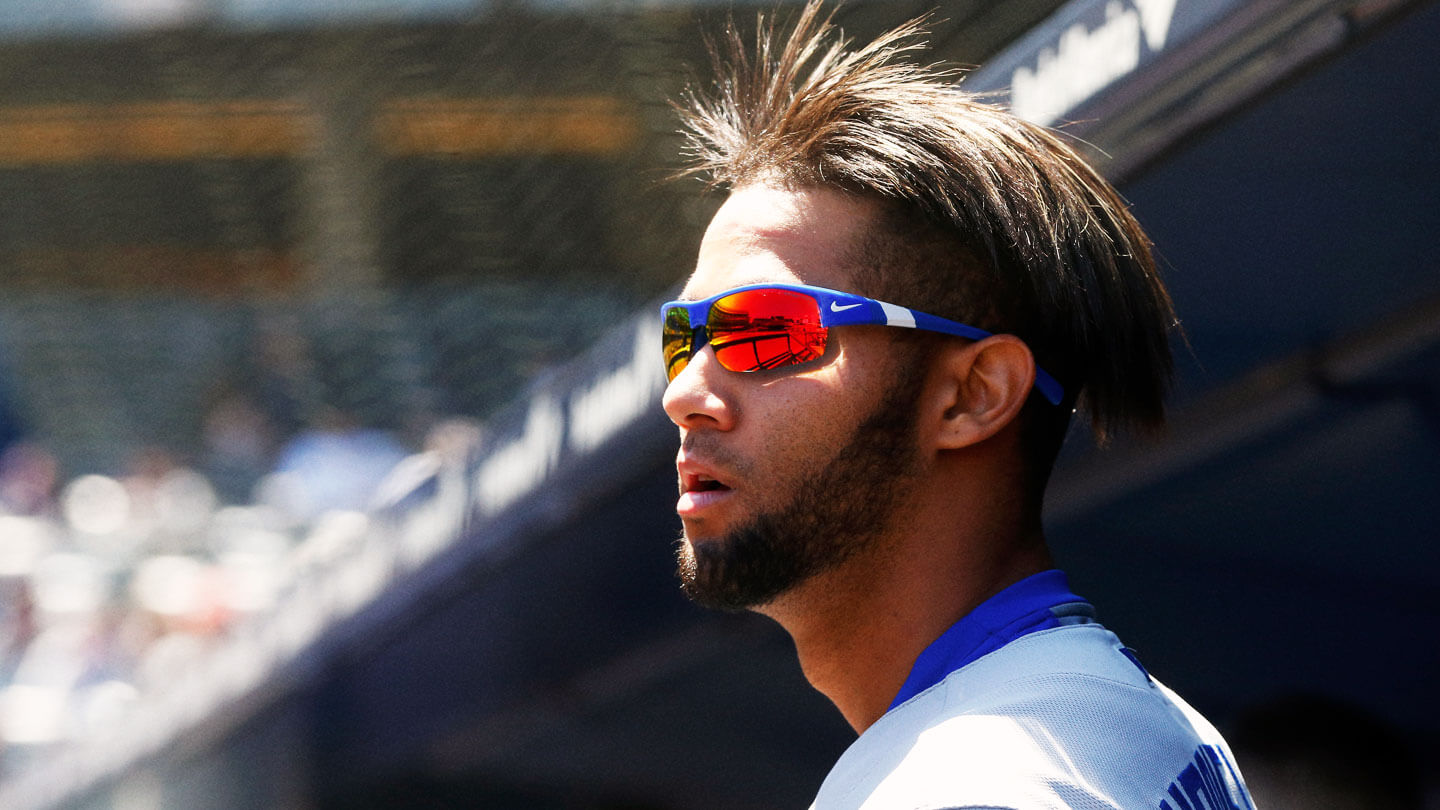
For as high as the Blue Jays are on Gurriel, nobody thought he’d be making his major-league debut less than 20 games into the 2018 season. That wasn’t the plan. And yet, there was Schneider this April, calling Gurriel into his office and breaking the news that after only a dozen double-A games to start his year, he was going to New York to take the field at Yankee Stadium. The Blue Jays were wracked by injuries, they needed a middle infielder in the majors, and Gurriel was on the 40-man roster. Go on, Junior — let’s see what you can do.
It went well until it didn’t. Gurriel had two hits and drove in three runs in his first game. A week later, he hit his first major-league home run. But when his production dipped, his plate appearances became less competitive, and his errors began to accumulate, he was quickly jettisoned back to the minors. His lack of selectiveness was only magnified against big-league pitching. After going 8-for-30 and striking out only four times in his first 9 games, Gurriel then went 6-for-38 and struck out 13 times in his next 11. “Any time it’s your first go ‘round, everybody wants to do a great job,” Gibbons says. “And sometimes they chase hits. Instead of just putting a good at-bat on and living with the results, you know?”
It’s a small sample, but in the 70 plate appearances he made during his first 20 games with the Blue Jays, Gurriel went after 43.5 per cent of the pitches he saw outside the zone. This season’s MLB average is 30 per cent. Gurriel admits one of his biggest challenges since he began playing in North America has been how quickly pitchers adjust to him. Case in point: while he was often challenged with fastballs in his first MLB plate appearances — as many rookies are — he quickly stopped getting good pitches to hit as the opposition picked up on his swing-happy approach. By the end of his three weeks in the majors, only 41.5 per cent of the pitches Gurriel was thrown were in the zone. But he was still swinging at over half the pitches he saw, and starting 63 per cent of his plate appearances with a strike. That’s a good way to strike out a lot.
“Everything is studied here. You have probabilities, you have stats, you have percentages,” Gurriel says. “I remember the first time I was shifted I was really caught off guard. I was like, ‘Wow, I thought they only did this for Big Papi. I never thought this was going to happen to me.’”
When Gurriel was with double-A New Hampshire earlier this season, Schneider urged him to use all that data right back, to study opposing pitchers and think along with them. They talked at length about the different pitches Gurriel was seeing in certain situations — with runners on, with the bases empty, ahead in the count, etc. And now that he’s more familiar with North American pitching, Gurriel can work on getting more familiar with North American pitchers. He still has less than a full season’s worth of plate appearances in the minors. And since he’s hopped around so much, there are very few pitchers he’s seen more than once. Every plate appearance has been like spring training — an unfamiliar arm with an unpredictable approach. Schneider and other Blue Jays evaluators believe that once Gurriel starts facing familiar foes, he’s going to take off.
“He’s a very bright player — he’s very keen and very aware of what’s going on around him,” Schneider says. “He understands that cat-and-mouse game between pitcher and hitter. And with more at-bats, more reps, seeing more pitches — he can start using that information to his advantage. He can be more selective, get into better counts, get to pitches he can really handle. I think that’s going to be a big separator for him.”
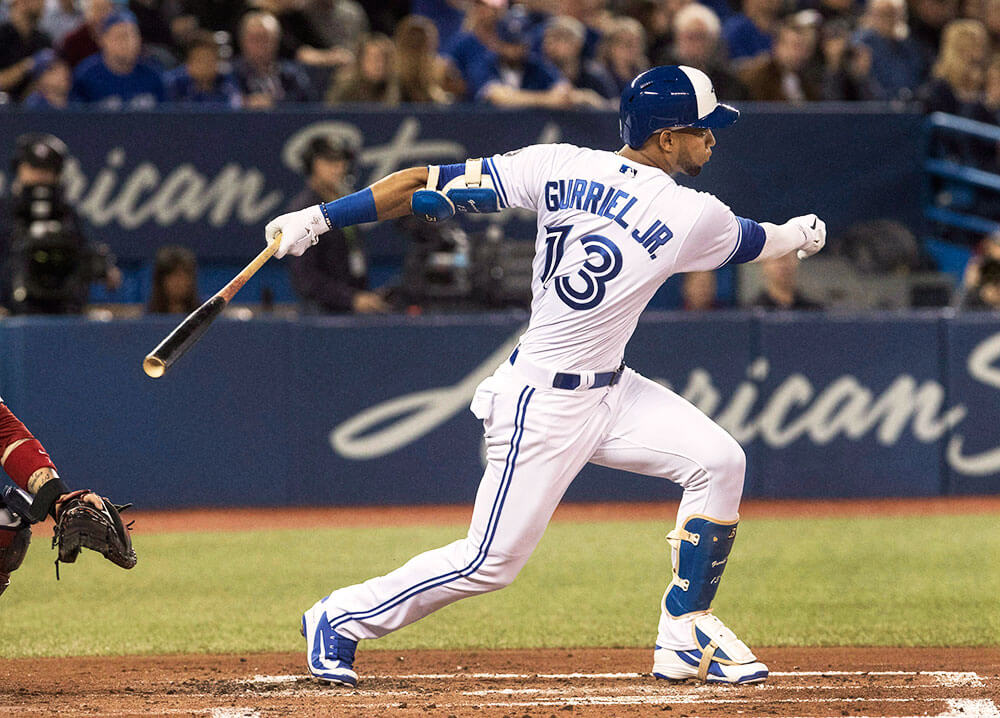
The boyish grin on Gurriel’s face after his first big-league hit is really something else. Standing on first base in the April cold at Yankee Stadium, moments after he sent a 90-mph Sonny Gray fastball back up the middle to plate two and give his team a lead, Gurriel clapped, smiled ear-to-ear, and put his hands on his helmet like he couldn’t believe what he’d done. Later in the game, he drove in another. Gurriel described that day in the Bronx as being “like my first time at an amusement park,” which isn’t something you hear every day from pro ballplayers. Schneider says Gurriel is one of the most animated, passionate players he’s worked with. Kim agrees: “He’s got a really infectious personality,” Kim says. “He’s so engaging. He really draws people to him.”
Gurriel’s countryman Morales has seen it for decades. The 35-year-old veteran of 12 MLB seasons first met Gurriel in the late ’90s, when he was playing for Cuba’s national team and visiting his manager, Lourdes Sr., at home — the one with the circle drawn between the windows and the big mirror on the wall. Gurriel was only seven or eight at the time, but Morales says he could tell the kid had innate ability. He knew how hard-working he was — and had to be, considering who his father is — but he never expected what’s happening now. “I’ll be honest, I never thought I was going to be with him in the same big-league locker room one day,” Morales says. “But he’s definitely got the talent to be here. He works very hard. He has the chance to be very, very good.”
During Gurriel’s first taste of the majors in April and May, Morales tried to impart as much wisdom as he could. He told his lockermate not to take anything for granted, to focus on preparation and detail, to have a professional approach. He said time in the big leagues can be fleeting. Sent down three weeks after his first call-up, it’s safe to say Gurriel found that out. “You’re trying to teach him discipline and to be respectful,” Morales says. “Look around, look at how other veterans handle things. Take everything in. Make sure you pay attention to details. If you do all that, then your talent can just take over.”
Morales spoke with Gurriel often during the time he spent in Buffalo. He was proud of how Gurriel responded to the demotion, as he notched 10 hits — including a pair of home runs — in his first 10 games. He went on to put up a .790 OPS for the Bisons with hits in 22 of his 27 games before getting called back up for a brief spell this week, covering for a Blue Jay who went on paternity leave. (Gurriel got into just one game in his second call-up, and all he did was go 2-for-4, including a 433-foot homer, the seventh-longest home run hit by a Blue Jay this season.) Don’t think team brass didn’t notice his resiliency, too. Bouncing back from struggles and adversity is one of the most important signs they look for in a young player. Not letting a bad couple weeks become a bad month is crucial to becoming a consistent, productive major-leaguer. The fact Gurriel does it all with an exceedingly upbeat temperament and passion to improve doesn’t hurt, either. “Just his humility, positivity, and work ethic — those three qualities really stand out,” Kim says. “It’s pretty impressive.”
Really, we’re still years from finding out if Gurriel can fulfill his potential; from finding out how much people will remember his particular branch on a storied family tree. But it’s hard to not like his chances of putting it all together. “I’ve always learned since I was young that you have to walk before you run,” he says. “So, I know I have a long way to go. I know there is a lot of stuff that I need to learn. But I believe I’m going to play for a very long time. I’ve always been around baseball. It’s something that’s in me. And to get to play this game every day? It’s all I’ve ever wanted.”

